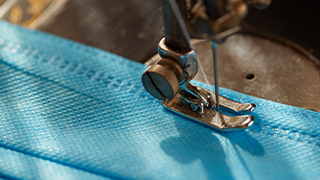Garment Components
Garment Components
Thread
Thread is essential for the construction of almost every manufactured garment. Thread is made from either natural materials, such as cotton, flax, wool, and silk, or from synthetic materials made by chemical processes, including polyester, nylon, rayon, and acrylic. Threads differ in their characteristics. Some threads are preshrunk to prevent puckering when the garment is laundered, while other threads shrink as the garment shrinks. Some threads consist of only one fiber, while others are combinations of fibers and/or types of yarn. For example, core-spun yarns have outer short-staple fibers twisted around high-tensile-strength centers, such as fiberglass, polyester, or nylon. Another useful characteristic of thread is stretch.
Closures, Zippers, & Buttons
Most garments require some type of system to hold garment panels together. To close and fasten most garments, one edge of the garment opening laps over the other. On women’s garments, the right side laps over the left; on men’s, the left side laps over the right. To fasten these closures, manufacturers use zippers, buttons, buckles, snaps, rivets, and hook-and-eye or hook-and-loop devices.
Findings & Trim
If the term “shell” describes a garment’s outer fabric layer, “trim” encompasses everything else. Trim includes “findings,” which are structural components such as fasteners, threads, pockets, shoulder pads, and waistbands. Trim also includes “trimmings,” which are decorative components, such as ribbons, bindings, and lace.
Shaping Materials
Shaping materials are layers of fabric used inside the garment shell that maintain the form of the garment by adding stability, strength, smoothness, and support in key areas.


